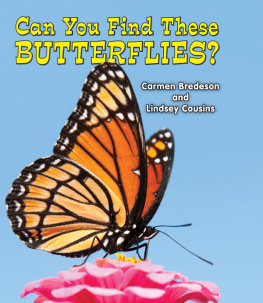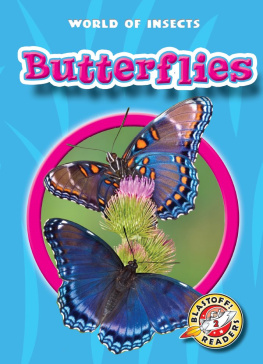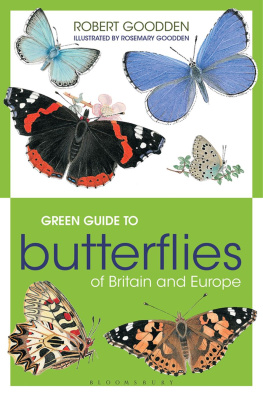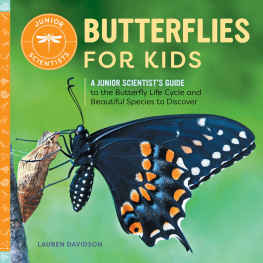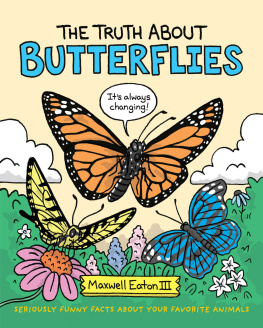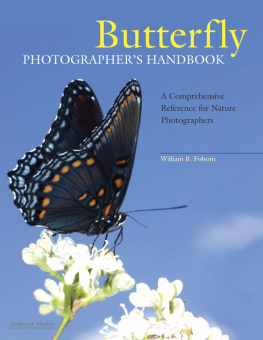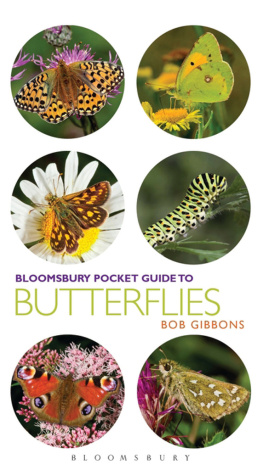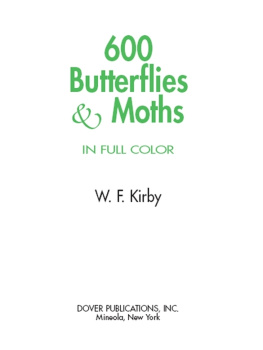Contents
Guide
Page List
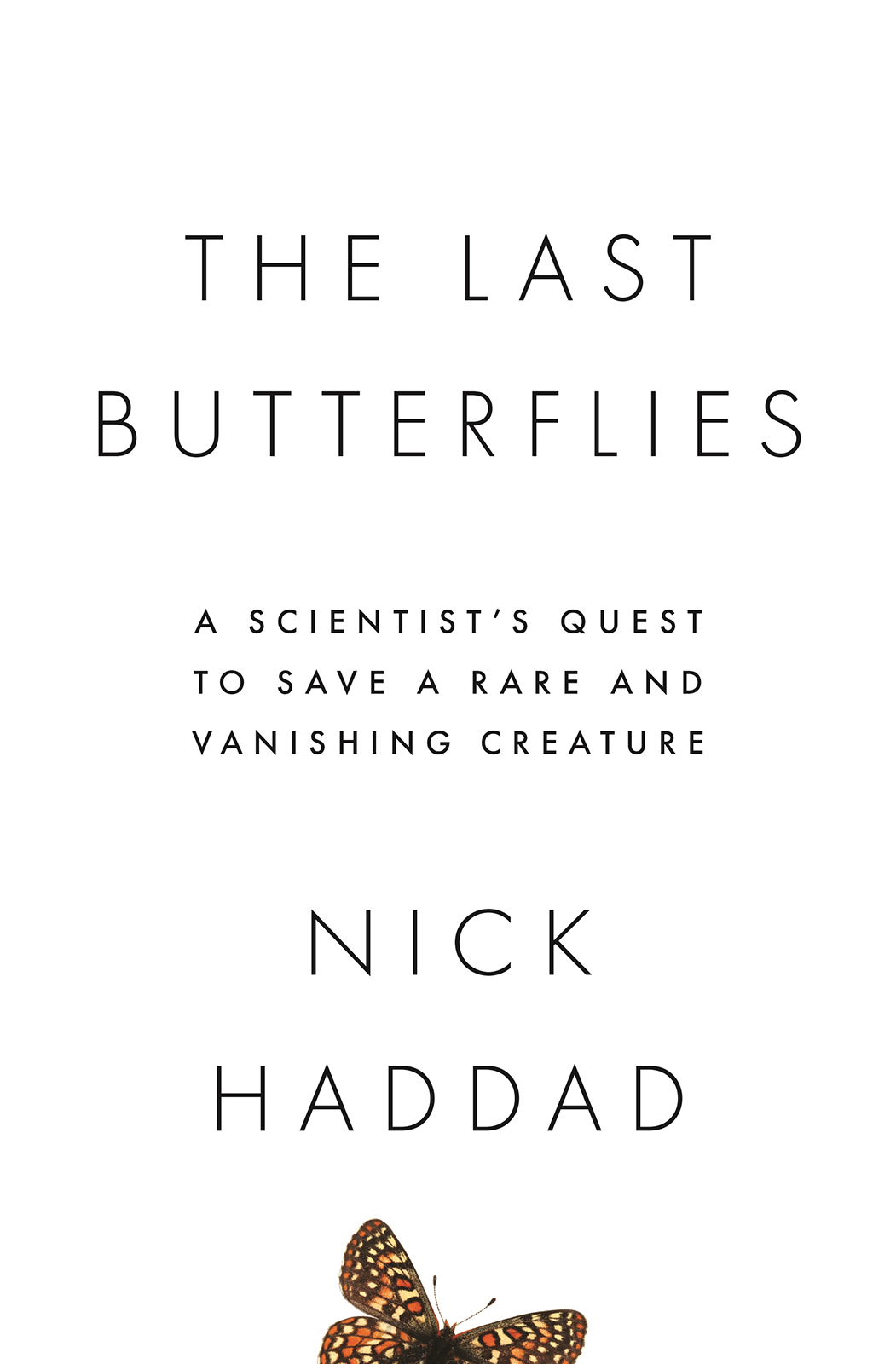
THE LAST BUTTERFLIES
THE LAST
BUTTERFLIES
A SCIENTISTS QUEST
TO SAVE A RARE AND
VANISHING CREATURE
NICK
HADDAD
PRINCETON UNIVERSITY PRESS
PRINCETON AND OXFORD
Copyright 2019 by Princeton University Press
Published by Princeton University Press
41 William Street, Princeton, New Jersey 08540
6 Oxford Street, Woodstock, Oxfordshire OX20 1TR
press.princeton.edu
All Rights Reserved
Library of Congress Control Number: 2018965563
ISBN: 978-0-691-16500-4
eISBN 978-0-691-18962-8 (ebook)
Version 1.0
British Library Cataloging-in-Publication Data is available
Editorial: Alison Kalett and Kristin Zodrow
Production Editorial: Ellen Foos
Jacket Design: Chris Ferrante
Production: Erin Suydam
Publicity: Sara Henning-Stout and Julia Hall
Copyeditor: Amy K. Hughes
Jacket image: Bay Checkerspot by Kim Davis and Mike Stangeland
TO KATHRYN, HELEN, AND OWEN
CONTENTS
ix
PREFACE
The unique butterfly with which I have been associated has perhaps the best latinized name in all of science. Inglorius mediocrisloosely translated as the Mediocre Skipperis small, with wings that measure about one inch across (, bottom). It is brown, a color broken by a few specks the size and hue of sand grains. One could argue that this butterfly, among the thousands of plants and animals that might be termed mediocre in appearance, deserves its name. I would like to think that the name is comical (and perhaps it is), but more importantly, to me, the Mediocre Skipper was my first real contribution to the study of rare butterflies.
I never set out to be a scientist or a steward of the worlds rarest butterflies. I was not a young butterfly enthusiast. I never had a butterfly collection, and I do not remember raising caterpillars. I did not find my passion until later in life. Following my graduation from Stanford University in 1992, I decided to take a job with the Center for Conservation Biology at Stanford to inventory butterflies in northern Guatemala. At the time, I wasnt particularly drawn to butterflies, but work in Guatemala sounded exciting. Several of the centers butterfly biologists accompanied me for the first week. Then they left me in a tropical forest with a tent, a vintage mountain bike, and a butterfly net (, top). They did not trust me, a young student, to identify the areas five-hundred-plus tropical butterfly species. So they left me with one instruction: collect all butterflies and send them to experts. I did so for two years.
Shortly after completing that task, I left Guatemala to begin graduate school. Five years passed, and George Austin, a museum scientist and a member of the group that took me to Guatemala, sent me one of his recently published papers. In it, he described some of the novel discoveries contained within the boxes of butterflies I had sent him.
One stood out. I learned that we had collected a butterfly that was a species new to science, Inglorius mediocris. At first that did not seem so novel. After all, wed collected other new species, including Calephelis tikal, which was named after Tikal National Park, where we caught it during our first week of netting. But as I read the article I learned that the Mediocre Skipper was a more unusual find than that butterfly from Tikal. Inglorius was a new genus, a lineage of butterflies potentially millions of years old. (A genus is a grouping of similar species that are related by morphology and genetics; for example, the Monarch is in the genus Danaus, and there are twelve other species in that genus.) I was astonished that the collection Id mailed George contained something unique. In the two decades since, others have collected only five more individuals of this species in Guatemala and bordering countries. No other species of the Inglorius genus have yet been discovered. The Mediocre Skipper impressed on me how much remains to be discovered about the diversity and the potential rarity of butterflies and of insects more generally.
I did not study rare butterflies before or in the few years after my research in Guatemala. My honors thesis as an undergraduate student was actually on birds found in oak forest, as I sought to understand how forest loss affected the types of birds that remained. My research sites, in Californias San Francisco Bay Area, were immediately adjacent to the grasslands inhabited by a rare butterfly, the Bay Checkerspot (Euphydryas editha bayensis); however, I never saw it there.
I also did not study rare butterflies during graduate school at the University of Georgia. I entered graduate school to continue research on birds. With them in mind, I studied an approach that is used in biodiversity conservation to help the species of an area overcome the negative effects of habitat loss. Landscape corridors are highways for plants and animals that reconnect habitats that have been lost and fragmented. I worked with the US Forest Service to create a large experiment to test the corridors effects. Shortly after I started this effort, my graduate adviser, Professor Ron Pulliam, nudged me toward studies of common butterfly species. Over the next decade, I found that landscape corridors were superhighways for butterflies and increased butterfly abundances. Yet none of the butterflies I studied was rare.
I peg the start of my search for rare butterflies to 2001. I was a new professor at North Carolina State University. At that time, government agencies and conservation organizations were struggling to develop conservation plans for the states two rare butterflies, the St. Francis Satyr (Neonympha mitchellii francisci) and the Crystal Skipper (Atrytonopsis quinteri). They asked me to bring my expertise on habitat loss and on butterflies to the conservation effort. I willingly embraced this opportunity. I found these butterflies to be especially enticing because they lived in heavily fragmented environments. Apparently, landscape corridors would speed their recovery. These butterflies and their environments were just what Id been looking for, a conservation setting in which I could put into practice what Id learned from my PhD research. As a naive over-optimist, I thought that my scientific expertise was just the ingredient needed to promote rapid recovery. I was going to be these species savior.
A few years after I moved to North Carolina and started my studies of rare butterflies, I had a debate with one of my graduate students, Allison Leidner, about who was studying the rarest butterfly. Was it I, studying the St. Francis Satyr, restricted to thirty-five acres on an artillery range in one army installation? Or was it Allison, who was studying the Crystal Skipper, restricted to a thirty-mile-long by 150-foot-wide strip of sand dunes on a barrier island? I am competitive, and I was determined to win this debate. The army thwarted my efforts, as at that time they would not let me into the artillery range to count the St. Francis Satyrs. As I could not win, I moved on to find a different butterfly to study that might have been even rarer. My decades-long search for the rarest butterfly had begun.
I have studied rare butterflies for nearly two decades. It turns out that the special window opened by the rarest butterflies has given my science and worldview a unique perspective. These rare butterflies reveal the diversity of life and the potential for loss. Butterflies are the best-known group of insects, and their loss portends that of many other insects that comprise the vast majority of earths diversity (excluding microorganisms). In this book, I stitch together stories about the discovery, science, threats, and conservation of the rarest butterflies in the world. While writing these chapters, I sought general insights into causes of butterfly decline and prospects for these insects conservation and recovery. The lessons I extracted are applicable to other rare plants and animals, not only to butterflies.


